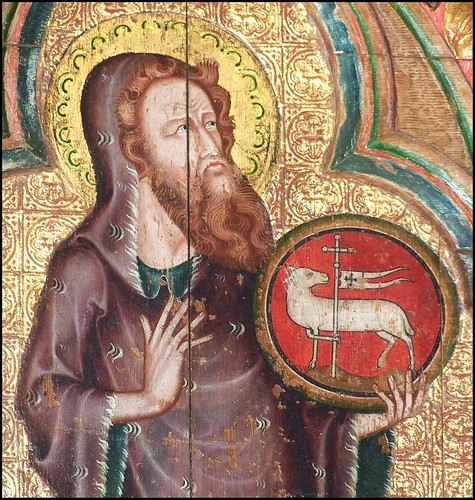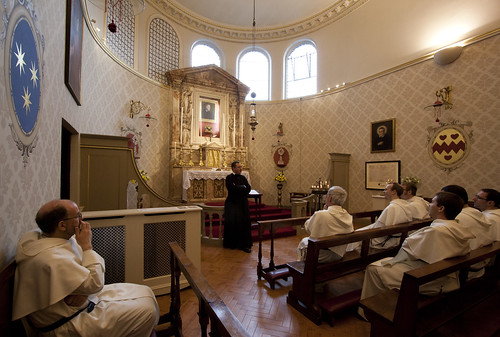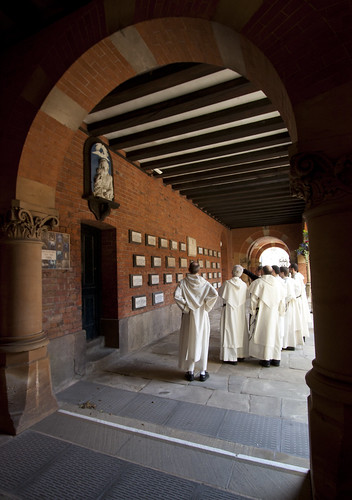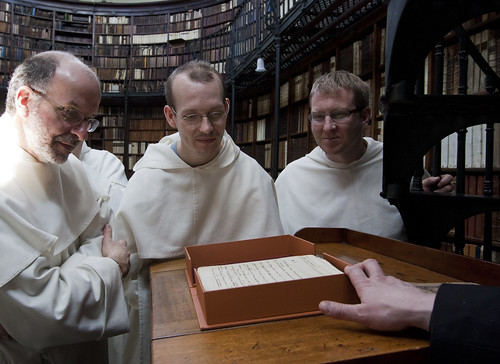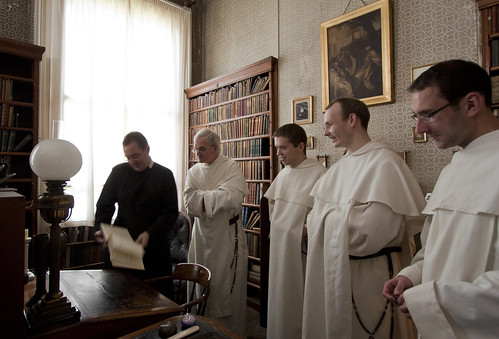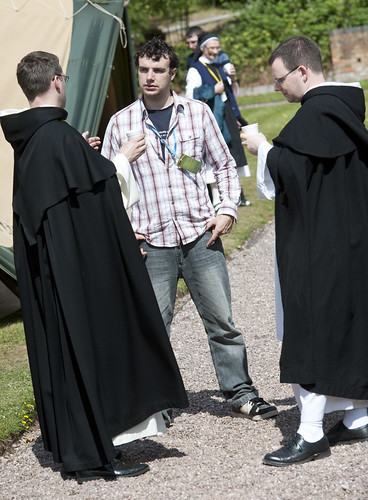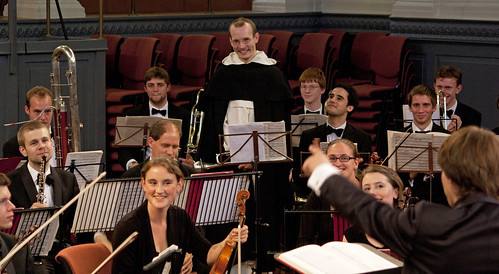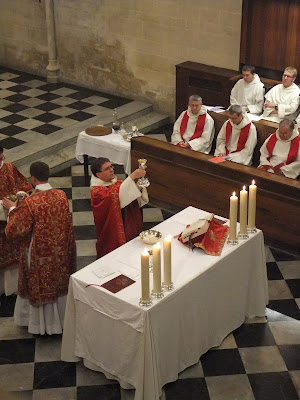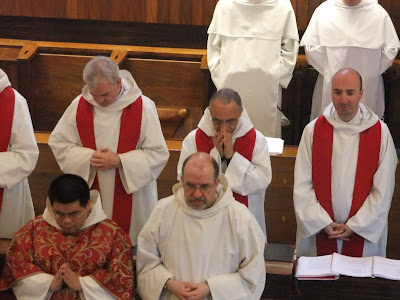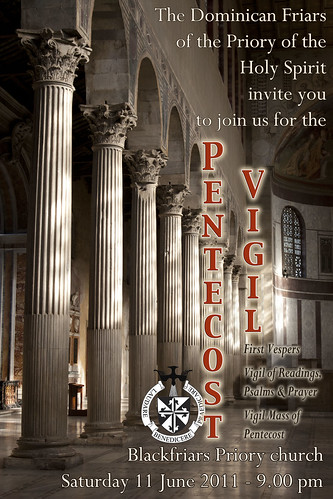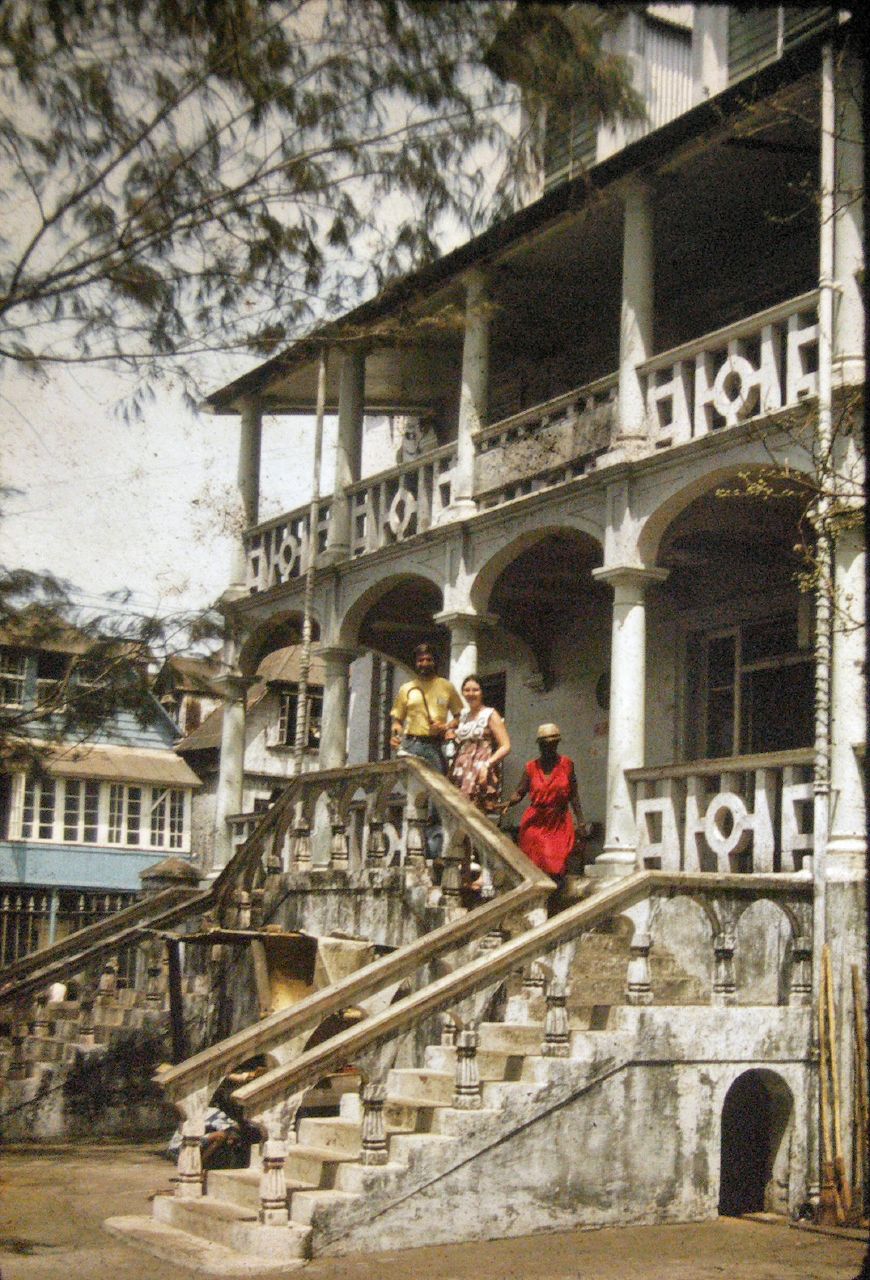Please join with us in praying for our brother Austin Gaskell OP who died on 6th June. Here is the homily preached at his funeral by Fr John Farrell OP, prior provincial. The gospel text was that of the Beatitudes, from the Sermon on the Mount (Matthew 5:1-12):Who is it who is speaking to us as we sit at the feet of Jesus on the mountainside hearing the beatitudes? It is Divine Wisdom made flesh, the incarnate Holy Wisdom who speaks to us now and here as he did on that mountaintop. 'Blessed are you who mourn ... blessed are the peacemakers ...' The same one who said 'let there be light' and there was light, in the beginning, speaks to us with the same creativity, the same ever present, ever fresh, creativity of God. And this creativity is not just that of Genesis but – and here lies the wonder of the mystery – it is the creativity of Calvary, of the Resurrection, and of the Giving of the Spirit of God.
This Jesus, Son of Mary and Son of God, is not being descriptive but causative. He is not saying, 'And by the way, despite appearances, it is a fact that you are blessed in the pain of your bereavement'; or 'incidentally, peacemakers are happy'. From his own crucified and risen person He says 'I am blessing you in your loss and in the dull ache of your bereavement; I, I myself, am blessing you'. And to those who strive for what is right and to those who are peacemakers he says, 'I, I myself, am with you, pouring my blessings upon you in the frustrations and disappointments of your calling'. Through Matthew's gospel we hear our Master's voice and become aware once again of his presence – 'where two or three are gathered together, I, I myself, am in their midst'.
Austin was a quiet man, a large (quite large) and gentle man, unostentatious, and a good listener. One of his greatest pastoral interests was Clinical Theology as founded by Frank Lake: it involved looking at life issues within the power of the gospel of Christ. He was also very much involved in Co-Counselling – where two or three are gathered together ...
His love of combining psychology, theology, and pastoral activity in the service of Christ had begun as an undergraduate at Glasgow. He had gone to university after his wartime service in the Navy at the age of 25, and entered the Order in 1956, aged 35, his joining delayed because of his father's illness. But in the Order it was not until he was in his 50s that he was given time to train – at the Westminster Pastoral Foundation 1973-4 – and then to practise – from the Chaplaincies in Edinburgh and York University, and then the parish at Beauly. After ordination he had served briefly at Woodchester and Hinckley and then, unhappily, at Hawkesyard. In 1974 he was made an Assistant University Chaplain in Edinburgh and was Superior there from 1977 to 1982.
In Edinburgh his happiest years were in the 'mixed community' of young women and men in George Square and in the friendships of the Chaplaincy parish. He enjoyed female friendship especially and was a kind, gentle and dependable friend and a wise counsellor. He himself had been a Third Order Dominican before becoming a friar and perhaps this made him attentive to the Lay Dominicans and the Dominican Secular Institute to which he was chaplain for many years.
In 1982, aged 61, he was asked to be chaplain at York University which he enjoyed very much as an older priest in a community of young lively students – a centre of peace and stability and faith. As he was leaving York to take up his first Highland parish – Marydale and Eskadale – the students wrote to him: 'Thank you for the time you have been with us because you are, for us, a sign of the presence of Christ', a remark he treasured – and what priest would not.
The return to Scotland was his own suggestion and the dream of working as a priest in the Highlands was something which had attracted him even before his ordination. It also appealed to a desire for solitude and silence which the Order had not given him until then. He loved the Scottish landscape and revelled in the local history and customs around Beauly. As Drumnadrochit was in his parish – the 'Official' Loch Ness Monster Visitor Centre – he claimed the monster as a parishioner. (He often pondered what the significance of 'official' was in that title.) Scottish friendship, Scottish fresh air and Scottish food – to see this large man sitting down with total concentration before a plate of tiny whitebait or sprats was to witness another Beatitude.
He had become a Catholic during the Second World War, in the Navy, at the age of 21. At 19 he had joined the Royal Navy, becoming an Able Seaman a year later and by 1945 he had been promoted a Temporary Lieutenant. His faith was deep and active. He received the sacraments whenever he could in the difficulties of warfare. Once, in charge of a Landing Craft needing repairs he chose to take it to Wootton Creek on the Isle of Wight – coincidentally the creek flows next to the Benedictine Abbey of Quarr whose monks he came to know very well. Austin had been seconded to the Naval Side of Combined Operations with the Army and Air Force, training together on the beaches of the west of Scotland around Troon and on the southern English coast for the invasion of Europe.
June 6th 1944 was D Day and Austin took his part in the largest Naval operation in history. His task in command of a Landing Craft was to ferry tanks from the larger vessels in the open Channel to the beaches. On that day many of his contemporaries died in battle. He was to die exactly 67 years later, on June 6th 2011. Combined Operations c.1944 had their own prayer:
O LORD GOD, our Father, our Saviour, our Might, we pray Thee take into Thy keeping us who are joined together in a trinity of arms on sea, on land, and in the air in this our special service for King and Country. We pledge ourselves to do, to dare, to die that others might live, believing in Him who said 'Greater love hath no man than this, that a man lay down his life for his friends'. Grant us faith, courage and determination that we fail not in whatever duty may lie before us, and may we be enabled by Thy Divine Grace to bear our part in establishing peace on earth and goodwill amongst men. This we ask for Jesus Christ, His sake. Amen.
But it was not by his death that Austin was to be enabled by Divine Grace to work as a peacemaker and a bringer of goodwill among men and women, but by 67 more years of living out Christian, Religious and Priestly service. He once preached a sermon on St Dominic's Day which began with the arresting question 'Why did someone who cannot preach join the Order of Preachers?' He was not a great preacher by words but, he went on to say, it was Truth, Veritas, that had drawn him to the Order. Truth I think as St Catherine of Siena presents it as from the mouth of God: 'What is this truth? That I had created humankind in my image and likeness so that they might have eternal life, sharing in my being and enjoying my supreme eternal tenderness and goodness' (Dialogue 21,58). Sharing the eternal tenderness of God with others. A large man in many ways.
But he listened not only to his neighbour but also to his Master. At a time of crisis – whether to leave York for the Highlands or not – he sent to the Provincial a prayer that was guiding him at the time (from John V Taylor, A Matter of Life and Death). We can take them as Austin's last words:
 |
| Austin taking leave of the parish at Beauly, April 2010 |
Father, if the hour has come to make the break,
help me not to cling,
even though it feels like death.
Give me the inward strength of my Redeemer Jesus Christ,
to lay down this bit of life and let it go,
so that I and others may be free
to take up whatever new and fuller life
you have prepared for us,
now and hereafter. Amen.
 I have never really supported the 19th century representation of the Most Sacred Heart of Jesus, standing with a open wound in his chest, where his heart is visible, or even with his heart removed from the body, maybe held in his own hand. It is not that I haven’t got the point – Christ offering his heart by love towards humanity – but I can’t help seeing it as a violation of the body, a disturbing image that removes me from the meditation on love. But popular devotions find their expression according to their own time and place, and one may ask how our time would like to represent this devotion today. Historically, the devotion to the Most Sacred Heart spread rapidly from the 17th century, but can be traced back to Benedictine and Cistercian monasteries in the 11th and 12th century.
I have never really supported the 19th century representation of the Most Sacred Heart of Jesus, standing with a open wound in his chest, where his heart is visible, or even with his heart removed from the body, maybe held in his own hand. It is not that I haven’t got the point – Christ offering his heart by love towards humanity – but I can’t help seeing it as a violation of the body, a disturbing image that removes me from the meditation on love. But popular devotions find their expression according to their own time and place, and one may ask how our time would like to represent this devotion today. Historically, the devotion to the Most Sacred Heart spread rapidly from the 17th century, but can be traced back to Benedictine and Cistercian monasteries in the 11th and 12th century.
















